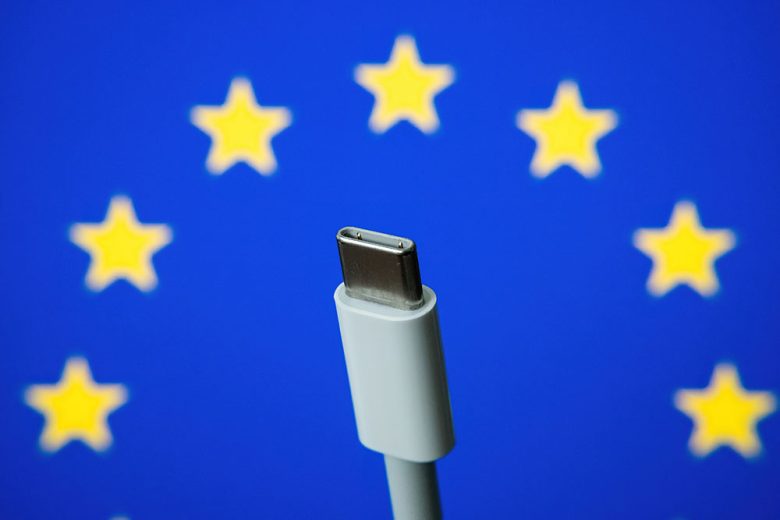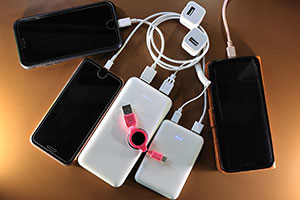Universal charger: USB-C to become the European standard

By the autumn of 2024, electronic devices other than PCs that are sold in Europe will require a USB-C port for charging. This measure showcases the role that voluntary standards play in ensuring interoperable devices and ultimately preventing different and unnecessary models from spreading across the market.
Every one of us has a drawer at home crammed with all sorts of electrical cables and connectors to charge our various electronic devices. USB, micro-USB, Lightning… why on earth are there so many different models? In Europe, Brussels has put its foot down. The European Commission and Parliament have agreed to impose a single model by the autumn of 2024, i.e. USB-C. All manufacturers of smartphones, tablets, e-readers, headphones and earphones, digital cameras, hand-held gaming consoles and portable speakers will have to comply with the rules if their devices feature a wired charging system. Laptops will follow suit in 2026. Proprietary technologies, like Apple’s Lightning, will have to take a backseat to USB-C.
USB underlying several voluntary standards
 The USB model has been standardized for quite some time. For example, voluntary standard NF EN IEC 62680-1-2 defines the elements required to implement a USB port-based power delivery system for the manufacturing industry, including power supply vendors and manufacturers of platforms, devices and cable assemblies. Part 1-3 of the standard focuses on cables and connectors. Finally, Part 1-4 proposes authentication specifications for USB Type-C. “These voluntary standards have been ready since 2018. By making USB-C a mandatory and universal connector, European regulations have merely chosen a model for which manufacturers had already played by the standardization rules. This measure will have even greater reach, since it extends far beyond the boundaries of the smartphone market,” says Alioune Cissé, who is keeping a close eye on these issues within AFNOR’s electro-technology department. The voluntary standards in question are international standards that have been developed within the International Electrotechnical Commission, which explains the IEC prefix. “NF” and “EN” mean that they have been adopted in France (as part of the AFNOR collection) and in Europe through CENELEC respectively.
The USB model has been standardized for quite some time. For example, voluntary standard NF EN IEC 62680-1-2 defines the elements required to implement a USB port-based power delivery system for the manufacturing industry, including power supply vendors and manufacturers of platforms, devices and cable assemblies. Part 1-3 of the standard focuses on cables and connectors. Finally, Part 1-4 proposes authentication specifications for USB Type-C. “These voluntary standards have been ready since 2018. By making USB-C a mandatory and universal connector, European regulations have merely chosen a model for which manufacturers had already played by the standardization rules. This measure will have even greater reach, since it extends far beyond the boundaries of the smartphone market,” says Alioune Cissé, who is keeping a close eye on these issues within AFNOR’s electro-technology department. The voluntary standards in question are international standards that have been developed within the International Electrotechnical Commission, which explains the IEC prefix. “NF” and “EN” mean that they have been adopted in France (as part of the AFNOR collection) and in Europe through CENELEC respectively.
Gradual alignment of the market
The European Commission addressed this issue in 2009. An initial memorandum of understanding agreed to develop a common specification based on the USB 2.0 Micro-B port for mobile phones only. This measure helped reduce the degree of fragmentation in the market and achieved a near-global level of alignment by scaling down the number of charging solutions for these devices from thirty to three. However, the MoU also allowed manufacturers to offer proprietary charging interfaces, such as those from Apple. Although formal approval is still pending, the June 2022 announcement represents another step forward. In doing so, it highlights the benefits that voluntary standards can provide by making life easier for consumers in search of interoperability and compatibility. The stakeholders involved in standardizing electrotechnologies, who have been brought together in this commission in France under the guidance of AFNOR and the French Electrotechnical Committee, are now paving the way for the next step, which means harmonizing wireless charging interfaces and ensuring interoperability, once again with the aim of making users’ lives easier.